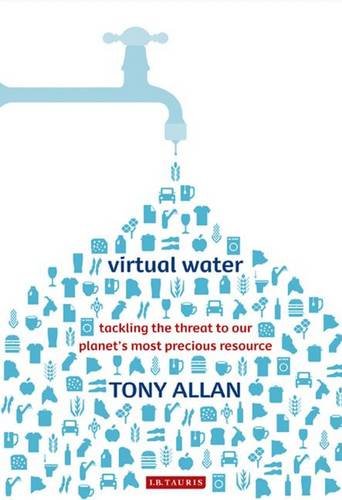World Water Day Resources – March 22, 2016
92% OF OUR WATER CONSUMPTION IS HIDDEN IN FOOD
Water is an increasingly rare asset that we are using in growing amounts, but few people know how it is consumed. Every day, the per capita amount of water used for domestic consumption amounts to 137 litres (3.6%); 167 litres (4.4%), non visible ones, represent the quantity of water needed to produce the industrial goodswhich we use, such as paper, clothes, and cotton. But the real “water mine” is hidden in food: each of us consumes every day an amount equal to 3496 litres (92%)*, a figure which can vary significantly according to what we eat, how we produce it and how we waste it. This enormous wealth of blue gold, which scientists call “virtual water”, highlights the link between water consumption and production of food and other industrial goods, a link which is often underestimated or totally unknown by the majority of people.
Out of awareness come a number of possible solutions for reducing our water footprint, starting with eating habits: it has been shown that a diet richer in fruit, vegetables and cereal-based products, and with limited amounts of foods of animal origin, makes it possible to significantly reduce “virtual water” consumption. This is what the Barilla Center for Food & Nutrition is proposing on the occasion of World Water Day on March 22.
 “The great majority of the water we use – and which we often waste – is not for drinking, showering or brushing our teeth,” explains Guido Barilla, BCFN President, in the preface to the new book The water we eat. Virtual water: what it is and how we consume it. “It goes towards all the stages of a product life cycle, and above all towards the food we eat. It follows from this that eating habits can have a significant impact on the availability of water resources.” The book, published by Edizioni Ambiente and available on March 22 in free preview on www.barillacfn.com, was edited by Francesca Greco and Marta Antonelli. The latter was one of the finalists in the 2012 BCFN Young Earth Solutions YES! competition for sustainable food choices.
“The great majority of the water we use – and which we often waste – is not for drinking, showering or brushing our teeth,” explains Guido Barilla, BCFN President, in the preface to the new book The water we eat. Virtual water: what it is and how we consume it. “It goes towards all the stages of a product life cycle, and above all towards the food we eat. It follows from this that eating habits can have a significant impact on the availability of water resources.” The book, published by Edizioni Ambiente and available on March 22 in free preview on www.barillacfn.com, was edited by Francesca Greco and Marta Antonelli. The latter was one of the finalists in the 2012 BCFN Young Earth Solutions YES! competition for sustainable food choices.
Also on the occasion of World Water Day, BCFN will publish on both its site and that of the United Nations a special video message prepared in collaboration with Angela Morelli, Young Global Leader 2012.
The book also includes a contribution by BCFN on the concept of the Double Pyramid of food and water and some data on the virtual water content of pasta. The Double Pyramid is an original model put forward by BCFN to connect the nutritional aspect of food with its environmental impact: the Pyramid reveals how foods which nutritionists recommend should be consumed frequently are also those with the smallest water footprint, while the foods which it is recommended should be consumed in reduced amounts are those with a greater environmental impact.
“The aim of the Barilla Center is that of raising greater awareness of the importance of these issues on a global level,” declared Luca Ruini, an expert in environmental sustainability issues for the Barilla Center for Food & Nutrition and editor of the book’s chapter on this topic. “But as a company as well, Barilla is in the forefront for continuing to improve the sustainability of its own products by reducing water consumption in its own pasta factories and bakeries, achieving, in the 2008-2012 period, a 23% reduction”. In February 2011, Barilla became the first private company in the food sector to certify a system for calculating its products’ environmental impact according to the guidelines supplied by the international System “Environmental product declaration, EPD®.
More information on http://www.barillacfn.com/en/focus-on/world-water-day/
* Water Footprint Network data

